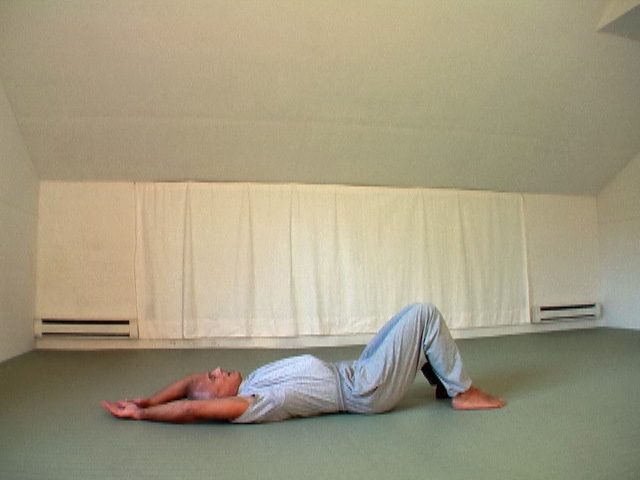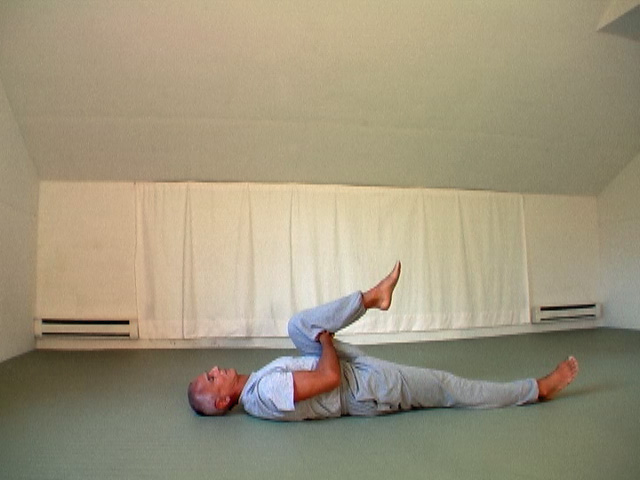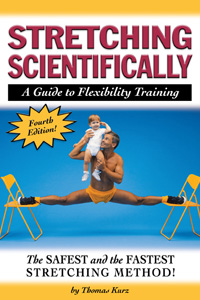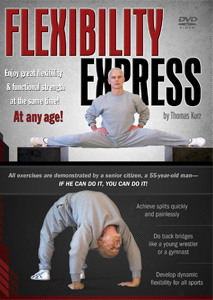by Thomas Kurz
Do these tests to determine if you have the potential to do back bridges, even before you start my strength and flexibility program.
Back Bridge Test:
Thoracic Spine Mobility Test

Keep your feet flat on the floor, buttocks firmly on the floor. Don’t arch your lower back. Keep your arms straight, with elbows locked, and lower them to the floor behind your head. If you touch the floor with your wrists, your back bridge will be fine. If you can’t touch the floor with your wrists, you will need to improve your thoracic spine’s mobility–otherwise your shoulders will suffer.
If in this test you can’t touch the floor with your wrists, you will need to improve your thoracic spine’s mobility. A short set of exercises that you can use for this purpose is shown on the Flexibility Express DVD in the chapter “Thoracic Spine Mobilization.”
Back Bridge Test:
Hip Flexors Length Test
To make sure the muscles pulling your thighs forward are not too tight for the back bridge, do this hip flexor test, also called the Thomas test:
Lie on your back, press your lower back to the mat, and pull one leg, with its knee flexed, toward your chest. Keep your back flat on the mat. If the thigh of the other leg, left lying on the mat, is lifted by this movement before the angle between your thighs reaches 120 degrees, your hip flexors, specifically iliopsoas, are too tight.
If you have passed both the thoracic mobility test and iliopsoas length test, you have proved to yourself that your shoulders, spine, and hips have the range of motion needed for a back bridge. You have also proved that the muscles of your arms, trunk, and legs are already long enough for a back bridge. If you follow the exercise program taught on the Flexibility Express DVD, you will be able to bend or drop back into the bridge any time, without any warm-up!
If in the thoracic spine mobility test you can’t touch the floor with your wrists, you will need to improve your thoracic spine’s mobility with a short set of exercises presented on the Flexibility Express DVD in the chapter on thoracic spine mobilization.
If the hip flexors length test revealed tightness of your iliopsoas, then performing lying leg raises, at gradually increasing range of motion, should remedy it. Leg raises, which are taught on the Flexibility Express DVD, develop the strength you need to kick with great power as well as for the intensive stretching exercises that lead to front splits and back bridges.
This article is based on the book Stretching Scientifically and the video Flexibility Express. Get them now and have all of the info—not just the crumbs!



